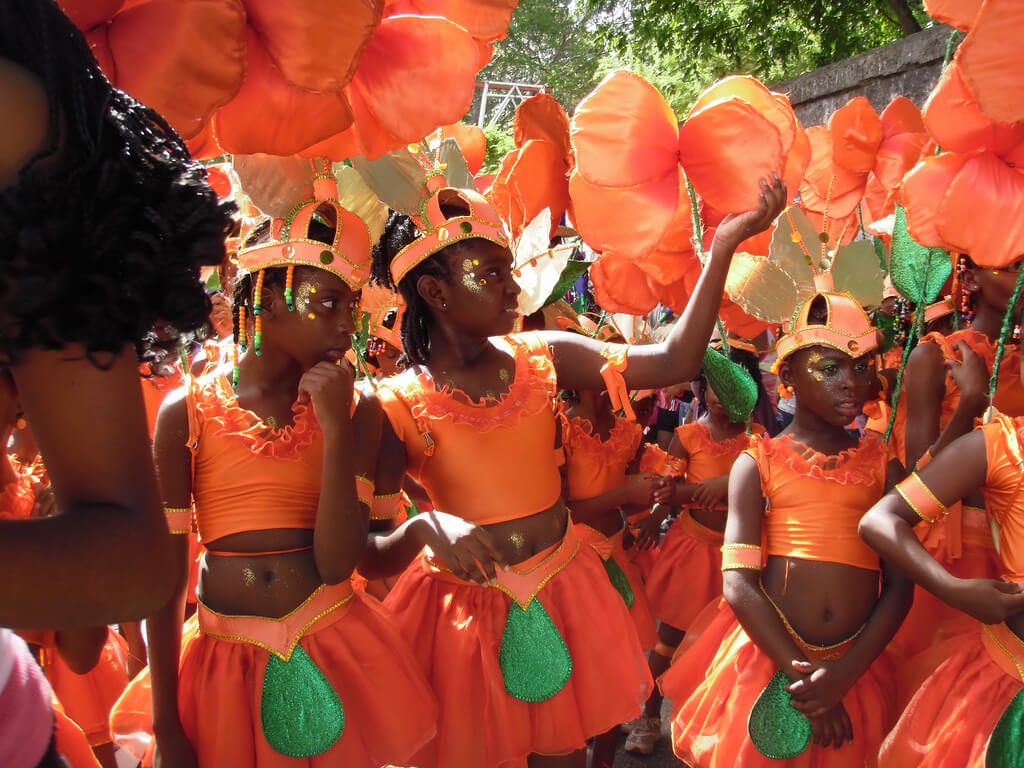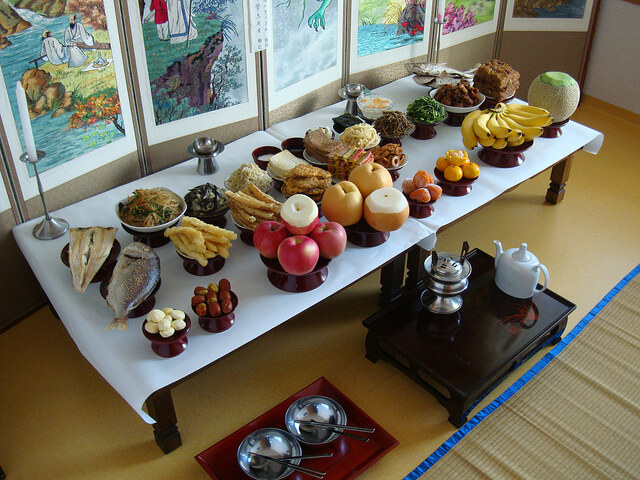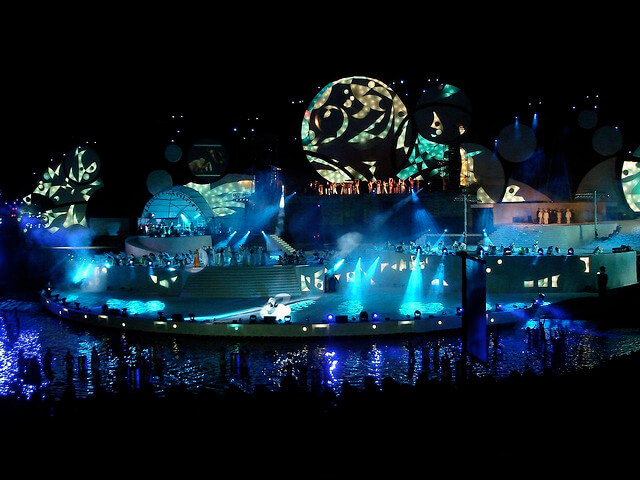It’s that time of year when our gardens are full of autumnal produce, from courgettes and runner beans to apples and blackberries, and our thoughts turn to the harvest. If you remember singing ‘We Plough the Fields and Scatter’ and digging a variety of old tins out of your cupboards for the Salvation Army collection, you’ve probably celebrated the Harvest Festival in the UK. Harvest celebrations are some of our country’s oldest traditions, the pagan festivities of the Harvest Moon long predating the church ceremonies introduced in the 19th Century. Given the importance of a good crop to the survival of a community it isn’t surprising that parties and ceremonies celebrating the harvest appear all over the world. Here are 7 of the most interesting traditions you will find across the globe.
1. Crop Over – Barbados
(photo source)

Crop Over is a vibrant harvest festival celebrated through June and July in Barbados which dates way back to 1688 in colonial times on the sugar cane plantations. It originally celebrated the sugar harvest, and has been revived in the past few decades for a new generation. This is a real party season and the biggest national festival in Barbados, featuring parades, heritage events, concerts, and culminating in a huge calypso competition where entrants compete for the title of Pic-O-De-Crop Calypso Monarch. The festival caught the global eye in recent years as popular Bajan musicians Rupee and Rihanna have joined in the festivities, and the events pull in thousands of tourists every year making millions of dollars for the country’s economy.
2. Chuseok – Korea
(photo source)

As in the UK, in Korea the harvest is celebrated on and around the autumn equinox. It is a major holiday known as Chuseok, and lasts for three days during which special memorial rites are performed for the ancestors and time is spent with the family. As a good harvest is attributed to a blessing from the ancestors, the family will usually hold a memorial service honouring back four generations. This is known as Charye, and involves offering a variety of food dishes as an offering which are arranged in a particular layout on a table and a special tea ceremony. Other memorial rites such as visiting and cleaning graves also occur at this time.
3. Bénichon – Switzerland
Usually taking part on the second Sunday of September (although this varies by region), Bénichon is a harvest and thanksgiving festival which is celebrated in some catholic parts of Switzerland. It is also combined with Rindya, which is the day when people return with their animals from high altitude alpine pastures in preparation for the coming Winter. Traditionally at this time the farmers and villagers would thank God for blessing their harvest, but this has grown to become a popular folk festival which focusses largely on feasting and spending time with family. The traditional Bénichon feast includes a local bread called Cuchaule, bouillon, lamb, cheese, waffles, fruit, and much more.
4. Maras Taun – Malaysia
Maras Taun is a Malay harvest festival, from the Belitung dialect words for ‘cutting’ and ‘year’. It is usually held in April around Belitung Island, after the rice harvest, and is also celebrated by fisherman to give thanks for their fishing success. The celebration lasts on average three days, and is celebrated with a special dance symbolising cooperation during the rice harvest. Malaysia is a Muslim country, and the village elders lead the people in prayer and bless special sacred leaves known as daun hati-hati or daun kesalan. These leaves bring good luck to the islanders who spread them around their homes and boats. The village chief also distributes steamed rice cakes called Lepat, symbolising that the leader must always serve the citizens
5. Saviour of the Apple Feast Day – Russia, Ukraine, Belarus
Also known as Saviour on the Hill, August 19th in Eastern Slavic countries is the Saviour of the Apple Feast Day, celebrating the fruit harvest. Celebrators eat a variety of dishes containing apples, and although the festival is now associated with the Orthodox church and the Transfiguration of Christ, it was celebrated long before its Christian origins. According to tradition, if on this day you make a wish on the last bite whilst eating an apple, it will come true. In Russia, apple fairs are held which include folk singing and dancing in traditional costume, as well as stalls well stocked with apples. In 2010, traffic police in Rostov-on-Don joined in the festivities by issuing apples and driving codes of conduct instead of the usual fines.
6. New Yam Festival – Nigeria
(photo source)

In Nigeria, the Igbo communities hold a harvest festival known as Iwa ji, or the New Yam Festival. As an important crop to the region and the first to be harvested of the year, this is an important cultural celebration for the Igbo people and is full of tradition. Only dishes containing yam are served on the day of the festival, with the first yam of the day being eaten by either the king or the oldest man in the community. Yams are also offered to god and the ancestors to thank them for the successful harvest and pray for more to come. Community display is also a big part of the festival, involving folk dancing, parades, and parties.
7. Fiesta Nacional de la Vendimia – Argentina
(photo source)

Fiesta Nacional de la Vendimia is an Argentinian festival held in early March in Mendoza City, celebrating the grape harvest, wine, and the winemaking industry. Each of the 18 departments of Mendoza have their own festivities, which all lead up to the big Central Act held in the Frank Romero Greek Theatre. The festivities of the celebration follow a fixed pattern every year, starting with the Blessing of the Fruits on the last Sunday in February. After that, events revolve around the selection of a “Reina Nacional de la Vendimia”, or National Grape Harvest Queen, which involves huge parades and women from every department of Mendoza. The Central Act involves over 1000 actors and dancers, and the sky is filled with laser shows and fireworks. It is unsurprising that this magnificent show fills the 20,000 seats of the venue, and it is estimated that over 50,000 people gather in the surrounding hills to get a glimpse of the show.
–
Harriet works in the Primrose marketing team, mainly on online marketing.
She’s a big fan of reading, TV quiz shows, and is a highly experienced user of gardens (especially when it involves lounging outside on a sunny afternoon).
As a trivia lover whose favourite book when growing up was an illustrated factopedia (true story), she likes to write for the blog about interesting things she has found out whilst wandering the internet.